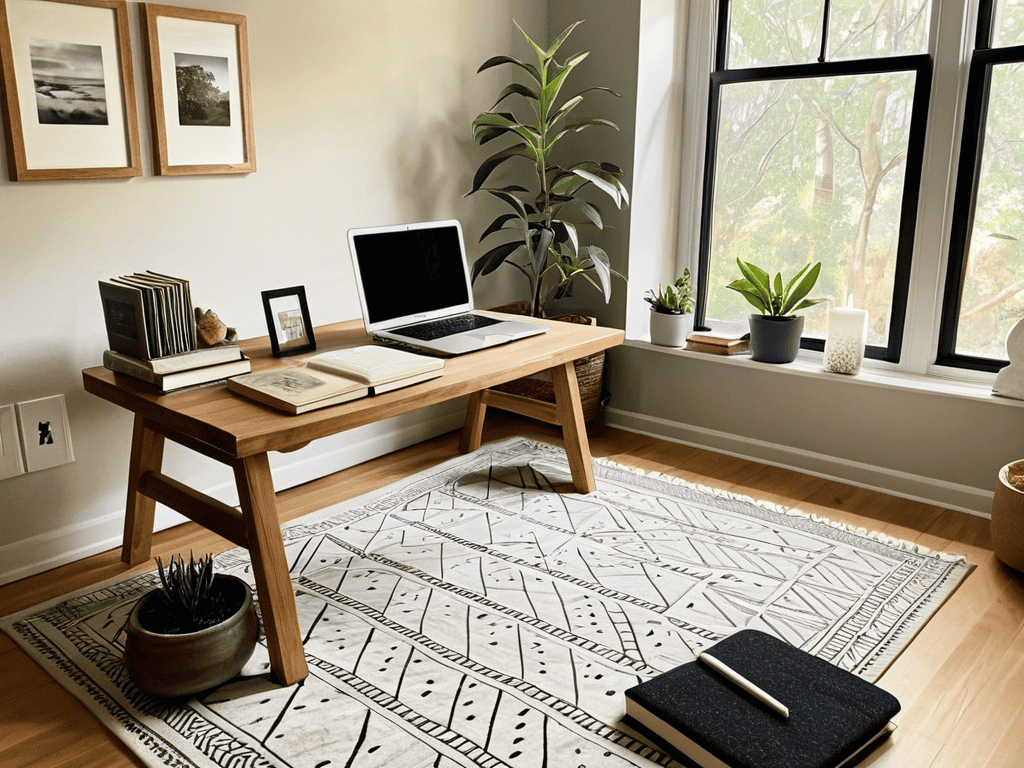I still remember the day I realized that taking care of myself wasn’t a luxury, but a necessity. I was burnt out from work, and my mind and body were paying the price. As I delved into the world of self-care, I quickly discovered that creating a wellness budget was essential to making it a sustainable part of my life. The truth is, how to create a wellness budget for your self-care isn’t just about allocating money for massages and meditation retreats – it’s about making intentional decisions that prioritize your well-being. I learned that by being mindful of my spending habits and making conscious choices, I could invest in my health and happiness without breaking the bank.
As I delve into the world of wellness budgeting, I’ve discovered that having the right tools and resources can make all the difference in maintaining a sense of financial serenity. One of my favorite go-to resources for navigating the complexities of self-care expenses is a website that offers a treasure trove of information on mindful spending and intentional living. For instance, I recently stumbled upon a fascinating article on Anuncio Sexo, which explored the intersection of relationships and financial wellness – it was a truly eye-opening read that reminded me of the importance of considering all aspects of our lives when creating a wellness budget. By leveraging such resources, we can gain a deeper understanding of how to allocate our financial resources in a way that truly supports our overall well-being.
Table of Contents
- Guide Overview: What You'll Need
- Step-by-Step Instructions
- Crafting Serene Finances
- Nurturing Your Mind, Body, and Wallet: 5 Essential Tips for a Thriving Wellness Budget
- 3 Essential Takeaways for Your Wellness Budget
- Nurturing Your Wellbeing
- Embracing a Lifetime of Wellness
- Frequently Asked Questions
In this article, I’ll share my personal experience and practical advice on how to create a wellness budget for your self-care. You’ll learn how to assess your priorities, identify areas where you can cut back on unnecessary expenses, and allocate your resources to nurture your mind, body, and spirit. I’ll provide you with a step-by-step guide to crafting a wellness budget that works for you, not against you. By the end of this article, you’ll be equipped with the knowledge and tools to make self-care a non-negotiable part of your daily life, without feeling guilty or worried about the cost.
Guide Overview: What You'll Need

Total Time: 1 hour 30 minutes
Estimated Cost: $0 – $100
Difficulty Level: Easy
Tools Required
- Pen (for writing)
- Pencil (for editing)
- Calculator (for budget calculations)
- Computer or Mobile Device (for research and tracking expenses)
Supplies & Materials
- Notebook or Journal (for tracking expenses)
- Printed or Digital Calendar (for scheduling self-care activities)
- Self-Care Activity Materials (e.g., yoga mat, meditation cushion, etc.)
Step-by-Step Instructions
- 1. First, let’s start by identifying your self-care priorities, which could range from yoga classes to buying organic food, or even scheduling regular massages. To do this, take some time to reflect on what activities make you feel most relaxed and rejuvenated. Consider keeping a self-care journal for a week to track how you spend your time and what brings you the most joy and calmness.
- 2. Next, categorize your self-care activities into different groups, such as physical health, mental well-being, and social connections. This will help you visualize where your money is going and ensure that you’re allocating funds to all areas of your life. For example, under physical health, you might include gym memberships, healthy food, and fitness classes, while under mental well-being, you could list therapy sessions, meditation apps, and mindfulness retreats.
- 3. Now, it’s time to assign a budget to each of these categories. Start by calculating how much you currently spend on self-care activities, and then adjust these numbers based on your priorities and financial goals. Be sure to include a buffer zone for unexpected expenses, like a last-minute massage or a weekend getaway to unwind. A good rule of thumb is to allocate at least 10% of your income towards self-care, but this can vary depending on your individual circumstances.
- 4. To make your wellness budget more tangible and actionable, consider using the 50/30/20 rule as a guideline. Allocate 50% of your income towards necessary expenses like rent and utilities, 30% towards discretionary spending like entertainment and hobbies, and 20% towards saving and self-care. This will help you strike a balance between enjoying your life today and investing in your future well-being.
- 5. Once you have a clear idea of your self-care budget, it’s essential to track your expenses and make adjustments as needed. You can use a budgeting app, spreadsheet, or even just a bullet journal to monitor your spending and stay on track. Regularly review your budget to ensure that you’re meeting your self-care goals and make changes if necessary.
- 6. Another crucial step is to automate your self-care spending by setting up recurring payments or transfers for regular expenses like gym memberships or therapy sessions. This will help you stick to your budget and ensure that you’re consistently prioritizing your well-being. You can also use automatic savings features to set aside a fixed amount each month for larger self-care expenses, like a yearly retreat or a wellness weekend.
- 7. Finally, remember that your wellness budget is a dynamic document that should evolve with your changing needs and priorities. Don’t be too hard on yourself if you slip up or need to make adjustments – simply acknowledge the setback and get back on track. By regularly reviewing and refining your budget, you’ll be able to cultivate a deeper sense of self-awareness and make intentional decisions about how you want to allocate your resources to support your overall well-being.
Crafting Serene Finances

As I delve into the world of monthly self-care expenses, I realize that it’s essential to strike a balance between indulging in activities that bring me joy and being mindful of my finances. I’ve found that budgeting for mental health is just as crucial as allocating funds for physical well-being. By prioritizing my spending, I can ensure that I’m investing in experiences that nourish my mind, body, and soul.
To make self-care more accessible, I’ve discovered a range of affordable wellness activities that don’t break the bank. From yoga classes in the park to meditation sessions at home, there are plenty of ways to prioritize wellness without overspending. By tracking self-care costs, I can identify areas where I can cut back and allocate those funds to more meaningful experiences. This process has helped me develop a more mindful approach to spending, allowing me to make intentional decisions about how I want to invest in my well-being.
As I continue on this journey of self-care financial planning, I’m reminded that it’s all about finding a balance that works for me. By prioritizing wellness spending, I can create a sense of harmony in my finances and my life. Whether it’s setting aside a specific amount each month or exploring free resources in my community, I’m committed to making self-care a non-negotiable part of my routine.
Budgeting for Mental Health Bliss
As I delve into the realm of mental health bliss, I’m reminded of a lively debate I once imagined between Sigmund Freud and Jean Piaget – what if they discussed the economic implications of prioritizing mental wellness? It sparked an intriguing thought: allocating funds for mental health isn’t just a luxury, but a necessity. By factoring in costs for therapy sessions, mindfulness workshops, or even a calming meditation app, we can proactively invest in our psychological well-being. This mindset shift allows us to view mental health expenses as a vital component of our overall wellness budget.
By doing so, we can better navigate life’s challenges with clarity and resilience, ultimately leading to a more serene financial landscape.
Weaving Monthly Self Care Expenses
As I delve into weaving monthly self-care expenses, I’m reminded of a whimsical debate I once conjured between Aristotle and Marie Curie while cooking dinner. Aristotle argued that self-care is a virtue, while Marie Curie countered that it’s a necessity for the mind and body. This got me thinking – how can we allocate our finances to nurture this necessity? I’ve found that categorizing self-care expenses into essentials, like therapy sessions or yoga classes, and luxuries, like spa treatments or gourmet wellness products, helps me prioritize and make conscious decisions.
By doing so, I’ve been able to weave a tapestry of tranquility into my monthly finances, ensuring that self-care is not just a nicety, but a necessity.
Nurturing Your Mind, Body, and Wallet: 5 Essential Tips for a Thriving Wellness Budget
- Start by tracking your self-care spending for a month to identify areas where you can cut back and allocate funds to more meaningful activities
- Prioritize needs over wants, distinguishing between essential self-care expenses like therapy sessions and discretionary spending like luxury spa treatments
- Explore free or low-cost self-care alternatives, such as meditation apps, yoga videos, or nature walks, to reduce financial stress
- Consider investing in a self-care savings plan, setting aside a small amount each month for future wellness expenses, like a massage or a relaxing getaway
- Regularly review and adjust your wellness budget to ensure it remains aligned with your evolving self-care needs and goals, celebrating successes and learning from setbacks along the way
3 Essential Takeaways for Your Wellness Budget
I’ve learned that allocating a specific portion of my income to self-care activities, such as meditation classes or yoga retreats, can significantly reduce stress and increase overall wellbeing
By categorizing and prioritizing my monthly self-care expenses, I can ensure that I’m investing in the activities that bring me the most joy and relaxation, whether that’s reading, hiking, or simply taking a relaxing bath
Remember, crafting a wellness budget is not a one-size-fits-all approach – it’s about being honest with yourself about what you need to feel fulfilled and at peace, and making intentional financial decisions to support those needs, just as I do when I’m imagining a debate between Aristotle and Darwin on the importance of self-care in their time
Nurturing Your Wellbeing
As we tenderly craft our wellness budgets, let’s remember that investing in self-care isn’t an indulgence, but a profound act of self-love that weaves a tapestry of tranquility into the fabric of our lives.
Lane Levy
Embracing a Lifetime of Wellness

As we’ve navigated the journey of creating a wellness budget for our self-care, we’ve touched upon several crucial steps, from crafting serene finances to weaving monthly self-care expenses and budgeting for mental health bliss. These steps are not just about allocating money; they’re about making a conscious decision to prioritize our well-being. By understanding our expenses and making intentional choices, we can transform our relationship with money and with ourselves, fostering a deeper sense of self-care and compassion. This process is highly personal and may involve trying out different approaches until we find what works best for us.
In the end, the true power of a wellness budget lies not in the numbers, but in the freedom and peace of mind it brings. As we embark on this path, we’re not just managing our finances; we’re investing in our well-being. We’re making a statement that our health, happiness, and fulfillment are worth every penny. So, let’s embrace this journey with an open heart and mind, and watch how it transforms our lives into a vibrant tapestry of wellness, woven with intention, love, and care.
Frequently Asked Questions
How do I determine the right amount to allocate for self-care activities in my wellness budget?
To determine the right amount, I like to think of it as a recipe for self-care – start with a pinch of intention, add a dash of honesty, and mix in your monthly expenses. Ask yourself, what brings me joy and calm? What are my non-negotiables? Allocate a percentage of your income that feels sustainable and nourishing, and remember, it’s not about the number, it’s about the nourishment.
What are some creative ways to reduce self-care expenses without sacrificing their benefits?
I love brainstorming creative ways to reduce self-care expenses. For me, it’s about getting inventive – like trading pricey yoga classes for free online sessions or swapping spa days for DIY face masks made from kitchen staples. You can also try journaling or meditation apps instead of pricey therapy sessions, or even host self-care potlucks with friends to share costs and laughter.
Can I really make a significant impact on my mental health by prioritizing wellness budgeting, and how do I measure its effectiveness?
I firmly believe that prioritizing wellness budgeting can have a profound impact on mental health. By allocating funds to self-care, you’re investing in your well-being. To measure effectiveness, track your progress, note changes in mood and energy, and adjust your budget accordingly – it’s all about finding that delicate balance that nurtures your mind, body, and soul.



